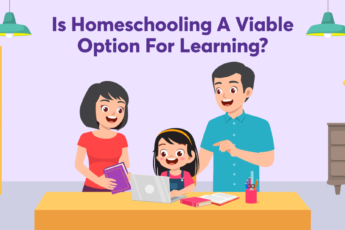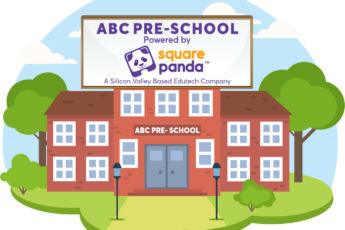The Future Of Education In The Age Of Artificial Intelligence

Technology is growing by leaps and bounds, becoming more commonplace in our daily lives as the years go by. In fact, Artificial Intelligence has the potential to add $957 billion, or 15% of current gross value added, to India’s economy by 2035, according to an estimate in a study by a tech giant.
One sector benefiting from technology-the education sector-is yet to see positive results in a country like India. Globally, private investment in educational technology, broadly defined as the use of computers or other technology to enhance teaching, grew 32% annually from 2011 through 2015, rising to $4.5 billion globally.
We’re seeing terms like Artificial Intelligence (or AI) and Machine Learning (or ML) being used very frequently in conjunction with education. We’re decoding these terms, and what changes they can bring to the Indian education landscape, in this article:
What Is ‘Artificial Intelligence (AI)’: It’s also called ‘Machine Intelligence’, and describes the artificial simulation of human intelligence, by machines. Examples of AI include Apple’s SIRI, self-driving cars, Presentation Translator for PowerPoint (it creates real-time subtitles for what the teacher is saying), and more.
What Is ‘Machine Learning (ML)’: A branch of Artificial Intelligence (AI), ML helps systems and software analyze and interpret patterns, by experience and exposure to repeated tasks. ML gets computers to perform tasks without being explicitly programmed for them. Apart from Siri, Alexa, and all the others, ML is used in GPS navigation services, social media platforms (Facebook can recognize a photo of your friend the instant you upload it), the spam filter in your email inbox, and even language learning apps like Square Panda and Duolingo, who use the games and exercises played on their system to calibrate and cater learning as per each individual learner’s level of learning.

“India will have the highest population of young people in the world over the next decade, and our ability to provide high-quality educational opportunities to them will determine the future of our country.” – (NEP, 2020)
We think the new policy by the Ministry of Education perfectly sums up our nation’s future requirements, to create a globally competitive, employable workforce of citizens. For this reason, AI and ML will need to be an intrinsic part of education, right from the early years.
Here’s what we think the future of education will look like, with AI and ML:
Smart Content Will Be Everywhere: Smart learning and smart content include any type of learning that is studied online, including video lessons and recorded classes. Textbooks as we know it will change, with parts or even whole chapters being converted into digital lessons. These new syllabuses will help children of all ages and academic levels, increasing their engagement to a greater extent.
Learning Will Get More Personalized: What we will see as the education landscape changes, is more adaptive learning methods adopted by schools and states as a whole. AI and ML have the unique ability to ‘read’ a child’s data in real-time, and adjust the curriculum to cater to that learner’s particular learning needs. Children coming in the invisible ‘middle strata’ (those who don’t attract attention by being at the top OR the bottom), will not fall through the cracks. Educators will see the benefits of adaptive curriculum, with having to put in extra efforts, which thereby frees up their time for other tasks. Not just learning, but each child’s response and feedback to learning will be personalized too, allowing parents and educators to understand individual children’s performance in detail. Multi-level classrooms, with children of different grades packed into one class with just one teacher, like those seen in rural areas, can make the best use of this personalized approach to learning.
Technology To Support Teachers And Educators: There are multiple instances of AI and ML being used in classrooms across the globe, with varying degrees of success. Not only does the technology get more affordable as time goes by, but it even allows teachers more time to work on lessons and plans, by taking care of all mundane administrative tasks like note making, collating data, etc. that is, for now, a task most Indian teachers have to do manually.
For instance, our early education platform at Square Panda has a ‘Portal’, to help monitor learning in schools and at home, in real-time. Read all about it, here.
All the evidence points towards AI and ML being a strong source of support and aid to educators, and are not to be taken as replacements. After all, education wouldn’t be the same without a ‘human touch’.

An Unbiased Assessment And Tracking System: On account of providing real-time traceability and trackability, AI and ML systems have started to flourish in the edTech segment. Grading and checking will soon be done via a programmed system, removing the possibility of human error and bias with it. Negative feedback will be done away with, increasing a child’s enjoyment of learning, without fear of repercussions.
Increased Reach: India has a vast geography, with multiple remote, hard-to-reach areas; these make equal learning opportunities harder for children in such areas. Technology enables children all over India, especially in the remote areas, to access quality education right from the early years. To make up for the intermittent internet connectivity in such areas, the tech can even be customized to work offline for long periods of time. AI can enable easier access to offline content, and even provide automated tutoring and mentoring programs for different learning styles. The near future could see a greater degree of interlinking and connection between the schools and students, allowing students to take courses and classes that were otherwise out of reach for them.
Skilling: The performance matrix in AI algorithms helps the machine determine what the child is likely to excel in, while enhancing skills that are applicable in the real world. AI and ML can also help train teachers, skilling them to solve quality issues in the education sector. The enhanced skill set children develop can help them compete on a global level as well.
The education sector in India has predominantly been ruled by human-to-human interaction. With the recent pandemic, this rule is slowly changing, and moving towards a slightly more digital learning landscape. Artificial Intelligence and Machine Intelligence advances are here to stay; educators need to plan for involving digital methods alongside traditional learning, gradually preparing the next generation to leverage the global AI revolution to our country’s advantage.
Interested in adding AI and ML to your teaching? Check out our Square Panda early literacy platform, which uses an adaptive engine to develop early English literacy in young children aged 2-8. As a child plays with our educational games, our software runs in the background, analysing patterns of play, frequency of words played, challenges faced, to suggest letters/words that the child should be focussing on next, inside the games themselves. This data also reflects in our ‘Portal’, allowing educators and parents the ability to monitor progress in real-time.

Stay tuned for our next post, on how we intend to spread early literacy even at the heart of India, and later, another upcoming post where we’ll be talking about how Square Panda is building a safe and kid-friendly ecosystem inside our platform, along with tips to keep every young learner safe while online.
Loved this article? Tell us how much; comment below.




Leave a Comment